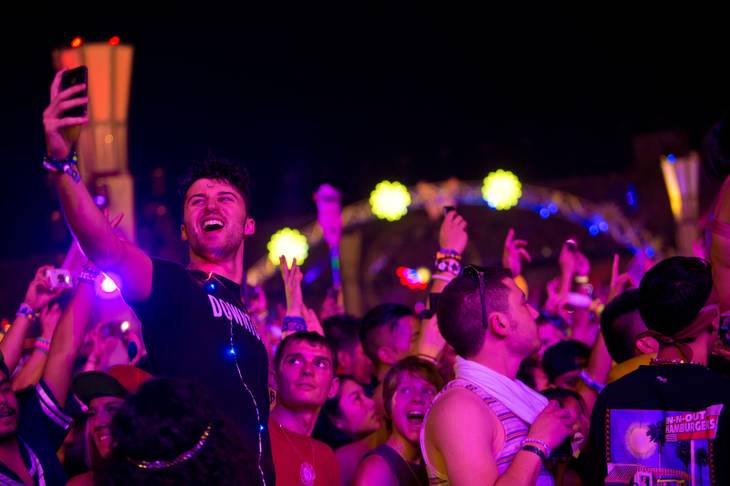The largest consumer group in history is entering the marketplace. Their wallets bulge with $1.68 trillion in buying power, and by 2020, they are expected to make up one-third of the adult population.
They’re the millennials, the generation generally defined as being born between the early 1980s and early 2000s, and Las Vegas is trying to cash in on them.
Unlike Baby Boomers, who marketers typically target with print ads, billboards and television commercials, millennials get their messaging through social media. Facebook, Twitter and Instagram influence them to try a restaurant, visit a music venue or check out a nightclub. Recommendations can come from friends or total strangers.
Reaching a millennial audience demands new marketing sensibilities and approaches. Local public relations professionals have had to learn how to use social media as a promotional tool. It’s not as easy as it might sound.
“The rise in popularity and importance of social media has added a big layer of complexity,” said Dave Kirvin, founder and co-owner of Kirvin Doak Communications. “Traditional media is still important, and the big-impact stories in print or television are crucial. But social media means consumers decide how they receive their news. … So your plan now has to include a near constant development of content to get out over the Internet, or people’s attention will wander.”
That steady flow of content is necessary because, unlike magazines that may sit on a coffee table or in a doctor’s waiting room for several weeks, a client’s name and message may appear on screen for mere minutes.
Owners or PR reps must regularly deliver messages into the social media stream that are relevant and interesting because if the marketing machine fails, the message can die.
Millennials “share what interests them, not what big companies want them to share,” said Jeff Fromm, president of millennial trends consulting firm FutureCast and co-author of “Marketing To Millennials.”
The trick, then, is to understand and adopt their sensibilities, to more consistently provide content they will want to share with their friends.
The good news is that Las Vegas has something millennials crave — adventure. Las Vegas is all about experience, and that breeds mountains of relevant content ripe for social media, Fromm said.
The Las Vegas experience has risen to such importance — partly because it plays so well in the hands of photographers and spreads so quickly on social media — that MGM Resorts International recently created a chief experience officer position to reinforce the company’s “commitment to delivering extraordinary customer experiences.” The job went to Lilian Tomovich, a marketing and branding veteran, who will be responsible for “creating and executing guest interactions across all marketing channels.”
Because adventures and photography go hand-in-hand, Las Vegas marketing executives regularly target Instagram, the photo-sharing app that’s the world’s fastest growing social network. An estimated 180 million users have uploaded 16 billion photos since its launch in 2010.
The power of photography in social media can’t be overstated. Posts get about 40 percent more interaction if they’re accompanied by pictures.
So with every poolside selfie or nightclub group photo, free Vegas publicity sweeps the Internet, getting clicks and shares from the very people who business owners hope will sustain the city’s future.
Carefully placed announcements in niche social media venues also can help a company gain followers.
Electric Daisy Carnival promoter Insomniac, for example, released its 2014 DJ lineup via Snapchat. The Las Vegas Convention and Visitors Authority recently launched GeoVegas, a Google platform that allows users to explore Strip hot spots from their mobile devices.
Most PR and marketing agencies in town have adjusted to the new media strategies while maintaining their traditional pitches. Some firms are hiring younger workers who have grown up in a social media environment and understand its influence and reach.
“Las Vegas offers a diverse collection of experiences to many demographics, so it’s important for us to have a variety of voices in our marketing efforts,” said Cathy Tull, executive vice president of marketing for the LVCVA. “In addition to the seasoned members of our team, the millennials or recent grads add another layer of expertise in how we market the destination.”
But with the instant and universal access to social media, there are landmines. Companies whose images once were impossible to tarnish quickly can be tainted by real-time feedback that spreads like wildfire.
The effects of bad reviews or a negative story that goes viral on public platforms can be so grave that social media content is monitored around-the-clock. Some businesses offer rewards or incentives for positiveonline reviews. Business can rise or fall on digital shout-outs and rants, reflecting the power of social media followers.
“It’s the rise of the citizen journalist,” Kirvin said. “Social media has given anyone with a computer and a Wi-Fi signal the ability to have a voice, and that voice can matter. Whether it’s a blog, a Twitter account, a Facebook page — you can now be part of the news dissemination process by posting your opinion or review. People make dinner or vacation decisions based on reviews of people they’ve never met.”
